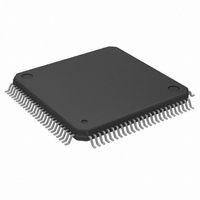DF2268FA13V Renesas Electronics America, DF2268FA13V Datasheet - Page 407

DF2268FA13V
Manufacturer Part Number
DF2268FA13V
Description
IC H8S/2268 MCU FLASH 100QFP
Manufacturer
Renesas Electronics America
Series
H8® H8S/2200r
Specifications of DF2268FA13V
Core Processor
H8S/2000
Core Size
16-Bit
Speed
13MHz
Connectivity
I²C, SCI, SmartCard
Peripherals
LCD, POR, PWM, WDT
Number Of I /o
67
Program Memory Size
256KB (256K x 8)
Program Memory Type
FLASH
Ram Size
16K x 8
Voltage - Supply (vcc/vdd)
3 V ~ 5.5 V
Data Converters
A/D 10x10b, D/A 2x8b
Oscillator Type
Internal
Operating Temperature
-20°C ~ 75°C
Package / Case
100-QFP
Lead Free Status / RoHS Status
Lead free / RoHS Compliant
Eeprom Size
-
Available stocks
Company
Part Number
Manufacturer
Quantity
Price
Company:
Part Number:
DF2268FA13V
Manufacturer:
Renesas Electronics America
Quantity:
10 000
- Current page: 407 of 712
- Download datasheet (5Mb)
13.6
Figure 13.17 shows the general format for clocked synchronous communication. In clocked
synchronous mode, data is transmitted or received synchronous with clock pulses. In clocked
synchronous serial communication, data on the transmission line is output from one falling edge of
the serial clock to the next. In clocked synchronous mode, the SCI receives data in synchronous
with the rising edge of the serial clock. After 8-bit data is output, the transmission line holds the
MSB state. In clocked synchronous mode, no parity or multiprocessor bit is added. Inside the SCI,
the transmitter and receiver are independent units, enabling full-duplex communication through
the use of a common clock. Both the transmitter and the receiver also have a double-buffered
structure, so data can be read or written during transmission or reception, enabling continuous data
transfer.
13.6.1
Either an internal clock generated by the on-chip baud rate generator or an external
synchronization clock input at the SCK pin can be selected, according to the setting of CKE0 and
CKE1 bits in SCR. When the SCI is operated on an internal clock, the serial clock is output from
the SCK pin. Eight serial clock pulses are output in the transfer of one character, and when no
transfer is performed the clock is fixed high.
13.6.2
Before transmitting and receiving data, the TE and RE bits in SCR should be cleared to 0, then the
SCI should be initialized as described in a sample flowchart in figure 13.18. When the operating
mode, or transfer format, is changed for example, the TE and RE bits must be cleared to 0 before
making the change using the following procedure. When the TE bit is cleared to 0, the TDRE flag
is set to 1. Note that clearing the RE bit to 0 does not change the contents of the RDRF, PER,
FER, and ORER flags, or the contents of RDR.
Figure 13.17 Data Format in Synchronous Communication (For LSB-First)
Clock
SCI Initialization (Clocked Synchronous Mode)
Operation in Clocked Synchronous Mode
Synchronization
clock
Serial data
Note: * High except in continuous transfer
Don’t care
*
LSB
Bit 0
One unit of transfer data (character or frame)
Bit 1
Bit 2
Section 13 Serial Communication Interface (SCI)
Bit 3
Rev. 5.00 Sep. 01, 2009 Page 355 of 656
Bit 4
Bit 5
Bit 6
MSB
Bit 7
Don’t care
REJ09B0071-0500
*
Related parts for DF2268FA13V
Image
Part Number
Description
Manufacturer
Datasheet
Request
R

Part Number:
Description:
CONN SOCKET 2POS 7.92MM WHITE
Manufacturer:
Hirose Electric Co Ltd
Datasheet:

Part Number:
Description:
CONN SOCKET 4POS 7.92MM WHITE
Manufacturer:
Hirose Electric Co Ltd
Datasheet:

Part Number:
Description:
CONN SOCKET 5POS 7.92MM WHITE
Manufacturer:
Hirose Electric Co Ltd
Datasheet:

Part Number:
Description:
CONN SOCKET 3POS 7.92MM WHITE
Manufacturer:
Hirose Electric Co Ltd
Datasheet:

Part Number:
Description:
CONN SOCKET 5POS 7.92MM WHITE
Manufacturer:
Hirose Electric Co Ltd
Datasheet:

Part Number:
Description:
CONN SOCKET 2POS 7.92MM WHITE
Manufacturer:
Hirose Electric Co Ltd
Datasheet:

Part Number:
Description:
CONN SOCKET 3POS 7.92MM WHITE
Manufacturer:
Hirose Electric Co Ltd
Datasheet:

Part Number:
Description:
CONN SOCKET 4POS 7.92MM WHITE
Manufacturer:
Hirose Electric Co Ltd
Datasheet:

Part Number:
Description:
CONN HEADER 2POS 7.92MM R/A TIN
Manufacturer:
Hirose Electric Co Ltd
Datasheet:

Part Number:
Description:
CONN HEADER 4POS 7.92MM R/A TIN
Manufacturer:
Hirose Electric Co Ltd
Datasheet:

Part Number:
Description:
KIT STARTER FOR M16C/29
Manufacturer:
Renesas Electronics America
Datasheet:

Part Number:
Description:
KIT STARTER FOR R8C/2D
Manufacturer:
Renesas Electronics America
Datasheet:

Part Number:
Description:
R0K33062P STARTER KIT
Manufacturer:
Renesas Electronics America
Datasheet:

Part Number:
Description:
KIT STARTER FOR R8C/23 E8A
Manufacturer:
Renesas Electronics America
Datasheet:

Part Number:
Description:
KIT STARTER FOR R8C/25
Manufacturer:
Renesas Electronics America
Datasheet:











